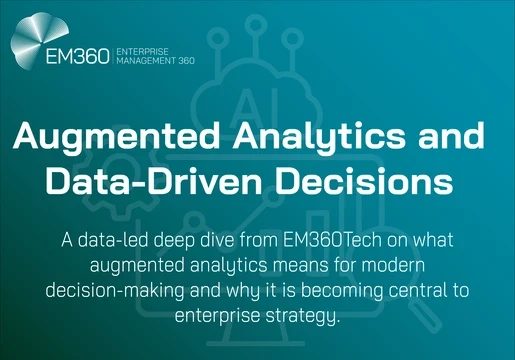At its heart, demand forecasting is about predicting what, how much, and when customers will purchase. It plays a critical role in supply chain planning, by enabling businesses to anticipate future demand and make informed decisions to ensure the right level of stock is in the right place at the right time.
The demand forecasting concept may be simple, but the process itself is a complex one; requiring analysis of multiple factors - including customer preferences and behaviour, economic conditions, and market trends - in what is often a volatile environment.
Discover more about the different elements of demand forecasting, its relationship to wider supply chain planning strategies, and the capabilities you need to get it right.

What Is Demand Forecasting?
Demand forecasting is the process of estimating future demand for a product or service over a specific period.
Forecasting is conducted using multiple types of information, including historical sales data, customer buying patterns (including seasonal trends), and data relating to relevant external factors, including broad economic indicators, industry-wide or market-specific trends, and the activities of competitors, including things like new product launches, or pricing/marketing initiatives that may have knock-on effects on demand for your products.
For retailers, demand forecasting is typically measured in sales. As such, accurate demand forecasting should provide you with a useful indication of how many units of a particular product you will sell over a set period of time.
What Is Demand Forecasting Software?

Demand forecasting software refers to any solution with functionality that enables you to predict future demand. While it is possible to use standalone demand forecasting tools, you will more often see demand forecasting co-existing with wider planning functionality within multi-function business software platforms. Examples of software packages that carry demand forecasting functionality include the following:
- Enterprise resource planning (ERP). These systems focus on centralising operational data, helping you automate and improve decision-making in areas such as inventory management, procurement, supplier management, production planning, and human resource allocation.
- Supply chain management (SCM). Designed to provide you with visibility across the various links of your supply chain. Demand forecasting integrated with an SCM solution is especially useful in helping you ensure movement of goods and supplies through your chain is aligned with upcoming future demand.
- Customer relationship management (CRM). How many solid leads do you have in your pipeline - and what does this mean for inventory? CRM solutions with inbuilt demand forecasting features give you the ability to predict future sales based on data linked to customer buying patterns, and the results of your lead generation initiatives.
- Inventory management. These solutions include dedicated tools for optimising stock movement and managing reorder points. Integrated demand planning assists businesses with decisions around product and materials reordering.
- HR / Workforce management software. For both retail/manufacturing and service sectors, demand planning integrated into workforce management solutions makes you better equipped to predict staffing needs and adjust levels accordingly.
- Financial Planning & Analysis (FP&A). FP&A platforms enable you to put demand forecasting to work at a strategic level, allowing you to build your predictions into budgets and financial reports. You are then better able to make informed decisions in areas such as resource allocation, departmental budgeting, and cash flow management.
Also Read: Top 10 Predictive Analytics Tools for 2024
What Capabilities Do Demand Forecasting Solutions Offer?

As with any type of business analytics tool, demand forecasting software is judged ultimately on whether it can generate results that you can actually trust. The most effective demand forecasting platforms tend to share most or all of the following elements:
Data Integration
Unless your demand forecasting solution takes into account all relevant factors, you risk generating untrustworthy results based on an incomplete picture. When assessing any solution’s likely reliability, look closely at its ability to integrate data from all relevant areas of your business (e.g. sales, customer support, marketing, and finance), as well as from external sources - including data from partners within your supply chain.
To keep your forecasts up-to-date (i.e. dynamic demand forecasting), you should also be able to integrate sources of real-time data, such as information on current market conditions, customer sentiment, and social media trends.
Also Read: Top 10 Data Integration Tools for 2024
Accounting for Uncertainty and Continuous Improvement
Advanced analytics enables the more sophisticated demand forecasting tools not just to consider a range of data sources, but also to explore causal relationships between different factors and demand - for instance, by predicting to what extent a VAT rise will have on demand for a particular product if that rise is reflected fully in your new price. And especially in a volatile or uncertain environment, it becomes important for the forecasting model to account for possible deviations from predicted demand.
No forecast is ever 100% certain. In general terms however, the more data a model can learn from, the better it can adjust for changes in demand patterns in future predictions. Demand forecasting tools with machine learning capabilities can be especially useful in this regard. ML algorithms enable models to become better at interpreting patterns over time. In addition, these models are generally better at detecting complex, non-linear data relationships, helping you identify ways in which demand is affected that may not be immediately obvious.
Scenario Planning
What if our main competitor cuts their prices by 20% What if we have an unusually wet summer - or warm winter? A good forecasting tool should always let you know what’s probable; but alongside this, it should also equip you to plan for circumstances or events that may be possible.
Demand forecasting tools with scenario planning capabilities enable you to ask “what if?” and get answers you can trust. From this, you can draw up contingency plans; e.g. by having additional logistics partners at the ready, or provisions in place to scale up or dial down production in the event of possible circumstances arising.
The Clear Business Case for Demand Forecasting
According to research from McKinsey, where an organisation improves its demand forecasting accuracy by 10 to 20 percent, this translates into a potential 5 percent reduction in inventory costs and revenue increases of 2 to 3 percent.
Especially in sectors where margins are tight, the benefits of demand forecasting - not least, the ability to respond quicker to sudden changes in circumstances - can go a long way in helping you build a more resilient and competitive business.







Comments ( 0 )